Money in Indonesia: A Tourist Guide to ATMs, Cards and Exchange
This post may contain affiliate links. If you make a purchase using one of these links, I may receive a small reward at no extra cost to you. See my Disclosure Policy for more information.
Traveling to Indonesia? Wondering if you can use your foreign bank card or easily exchange money? The quick answer to both is a resounding yes!
Foreign cards work in Indonesia, so you can pay with a card or withdraw cash from an ATM easily. Moreover, fees are minimal or zero: I have never had to pay a fee to withdraw money.
You will also have no trouble exchanging your foreign currency for millions of rupiahs. Yes, millions!
| Best foreign currency to bring | USD, AUD, Euro, GBP |
| Where to exchange? | Authorized exchange bureaus |
| ATMs without a fee | Most don’t charge fees (avoid CIMB and BRI) |
| Can you withdraw USD directly? | No |
| Can you use Revolut, Wise, Monese, etc? | Yes! |
| Cash or card? | Mostly cash |
It’s time for the details, so let me tell you all about money in Indonesia as a tourist! I have spent over 9 months (and counting) in Java, Bali, and Lombok, and here are the details, tips, and tricks!
Currency in Indonesia
The currency in Indonesia is the Indonesian Rupiah with code IDR.
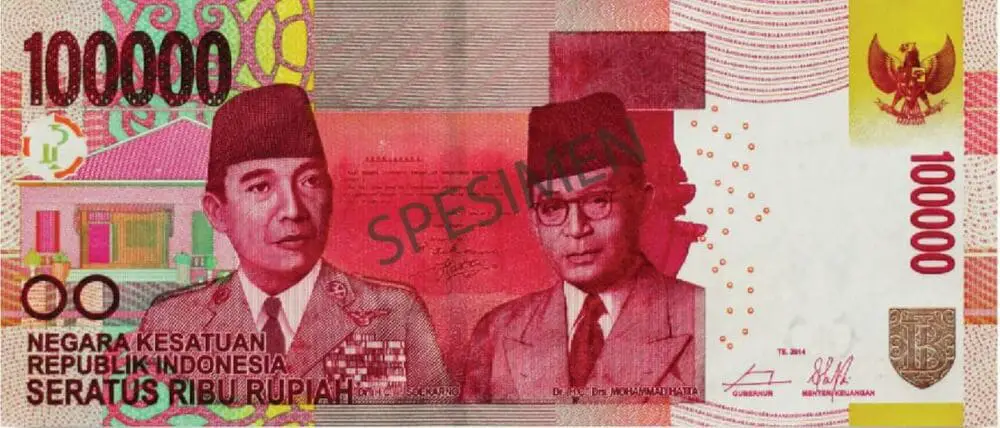
Indonesia is one of those countries where you instantly become a millionaire the first time you exchange money. Look at all those zeros! They appeared after the Asian Financial Crisis of 1997, and even though there are plans to remove the zeros, for now, they stay.
The Rupiah has been somewhat stable since then. One million IDR (called “one juta” by Indonesians) is around 65$. Please check the current rate, though – these change daily, of course.
The banknotes in circulation are 1.000, 2.000, 5.000, 10.000, 20.000, 50.000, and 100.000 IDR.
Coins still exist even though their value is quite low. There are 100, 200, 500, and 1.000 IDR coins. You may find a 50 IDR coin (0.003 USD) on the ground, but nobody ever uses it. Keep it as a souvenir.
Indonesian Money Vocabulary
Some money vocabulary you will need when coming to Indonesia:
- Money: Uang;
- Pay: Bayar;
- Card: Kartu;
- Hundred: Ratus
- Thousand: Ribu;
- One hundred thousand: Seratus Ribu;
- Million: Juta.
- Satu: 1;
- Dua: 2;
- Tiga: 3;
- Empat: 4;
- Lima: 5;
- Enam: 6;
- Tujuh: 7;
- Delapan: 8;
- Sembilan: 9;
- Sepuluh: 10.
Can you use your card in Indonesia?
Yes, you can use your foreign card to pay while in Indonesia.
In bigger supermarkets, hotels, some bars, and shinier restaurants, you will have no trouble paying on a POS terminal using your international bank card.
Forget about using your card in small warung-style restaurants, street food vendors, family-owned guesthouses, most museums, and bus transportation.
Convenience stores like Alfamart and Indomaret are a gray area. They have POS terminals but only accept domestic cards. I’ve still managed to pay with my foreign card a few times, though. However, when I prompt the cashier to at least try, they usually refuse. Go figure.
Indonesia is rapidly transitioning towards digital money and cashless payments. Many have started using GoPay to quickly scan a QR code and pay.
Also called QRIS (QR Indonesian Standard), you, as a foreigner, can set up a GoJek account and deposit some money. Then it’s just a matter of paying by scanning the QR code.
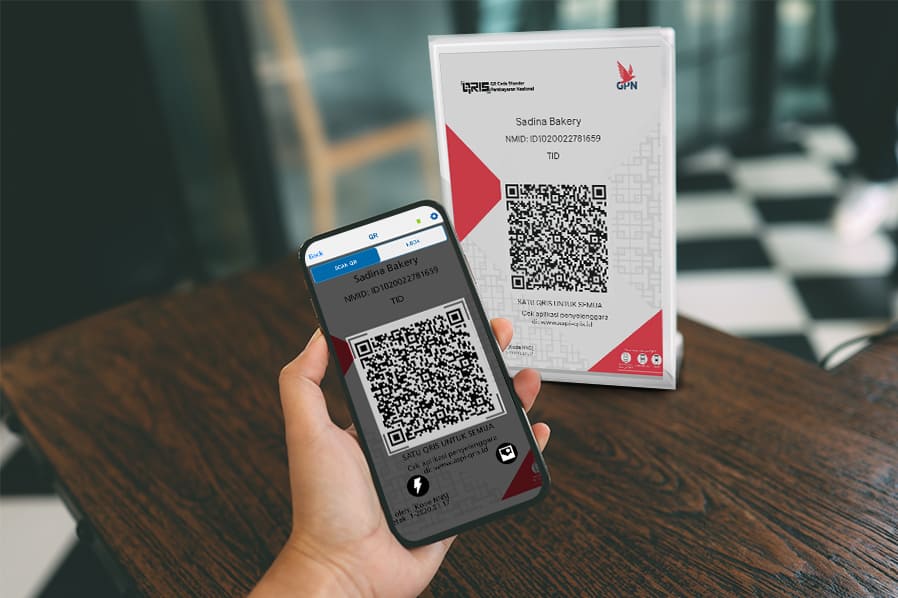
It is not necessary to have it to ‘survive’ in Indonesia. After more than 10 visits, I have yet to use it for anything else than booking train tickets on the Commuter Lines.
Visa, Mastercard, and Maestro are accepted on most POS terminals. American Express cards are accepted only in very high-end resorts and hotels.
ATMs in Indonesia
There is no shortage of ATMs all across Indonesia. I feel there may even be way too many, really!
Then again, I remember I spent most of my time in Java, where the population density is one of the highest in the world. Of course, people need access to their money.
Bali, with its (over)developed tourism industry, is no exception either, and ATMs are plenty.

Unless you’re somewhere in the jungles of Kalimantan (Borneo) or Sumatra, I bet there’s an ATM just around the corner where you can withdraw cash.
Most of the ATMs in Indonesia do NOT charge a withdrawal fee!
Some of the most popular banks without withdrawal fees are:
- BCA
- Mandiri
- BNI
Avoid CIMB Niaga, which recently introduced a 2.5% withdrawal fee. Also, avoid BRI as some of their ATMs ask for a 3% fee (also recently introduced).
All ATMs will certainly accept Visa and Mastercard. Some ATMs may also accept Maestro cards. Almost no ATMs accept American Express, though.

The withdrawal limit on ATMs varies between 1 million and 3 million IDR (65 to 190 USD). Since there are no withdrawal fees, it doesn’t matter if you withdraw twice or even 3 times in a row, as long as your bank doesn’t charge for every single withdrawal.
The highest withdrawal limit is on the ATMs of Permata Bank, and HSBC at 3 million IDR (~190$).
CIMB Niaga will also allow you to withdraw 3 million IDR but charge a 2.5% fee, so I avoid it.
BCA will let you withdraw up to 2.5 million IDR. The limit at BNI is usually 2 million IDR, and most Mandiri ATMs only let you withdraw 1.25 million IDR at a time.
On most ATMs, you will see a number written/pasted on the front – either 50.000 or 100.000. This is the denomination of banknotes that the ATM dispenses. If you don’t want your wallet to burst, opt for the bigger banknotes.
Moreover, if the ATM has both denominations, you will be able to choose which one you want on the screen. If it only has the sticker for 50.000 IDR, it probably also has a lower withdrawal limit.
Remember: Always choose to be charged in the local (IDR) currency for ATM withdrawals! NEVER accept currency conversion!
Your bank will convert automatically at a much better rate than the ATM and save you a ton of money!
Withdrawal Fees
Very few of the ATMs in Indonesia charge a withdrawal fee on their end.
If it does, it will list it before you agree to conduct the transaction. In this case, just cancel and try another ATM.
This doesn’t mean your bank doesn’t charge an “access” or “foreign currency withdrawal” fee. Check with your bank first.
I can confirm that Revolut does NOT charge for withdrawals (up to a limit depending on your plan). I have not paid a single dime in transaction or withdrawal fees using Revolut in Indonesia.
ATMs that dispense USD
There are no ATMs that dispense USD in Indonesia.
To obtain greenbacks, you have to withdraw Rupiah and then exchange for USD in an office.
What currency to bring to Indonesia
Coming to Indonesia as a tourist and want to have tangible currency? Bring one of the most traded ones – US dollar, Euro, GBP, or AUD.
The most popular foreign currencies that are traded and exchangeable in Indonesia are:
- Australian dollar
- British Pounds
- Canadian dollars
- New Zealand dollars
- Swiss Francs
- Japanese Yen
- Chinese Yuan
- Indian Rupee
Some exchange bureaus may offer better rates for higher denomination banknotes. In general, 50 and 100 USD notes are seen as “better” and may yield a slightly higher rate.
It’s a similar thing with Euro banknotes, except that 200 and 500 euro notes may be outright rejected in some places due to fear of fakes. This is quite rare, though.
Make sure your banknotes are crisp and new. Exchange bureaus abroad are notoriously picky when it comes to foreign currency banknotes. Not as picky as in Cambodia, though.
Currency Exchange in Indonesia
In this section, I will share with you all there is to know about exchanging money in Indonesia.
Exchanging at an Authorized Money Changer
Go to Google Maps and search for an Authorized Money Changer. That’s how exchange bureaus are branded. They usually have the rates on a digital display board prominently placed in front or on the side.

Mind these points:
- Bring your passport with you. A picture of the passport is usually enough, too.
- Your foreign currency banknotes must be clean, crisp, and have no signs of wear or tear.
- Most banks are open from 09:00 to 17:00 and closed on weekends.
- You can exchange money at the airport, but you will face a slightly worse exchange rate;
- The more foreigners that frequent the location, the poorer the exchange rate. This is especially true for popular Bali areas like Kuta, Ubud, and Canggu.
Exchanging Rupiah back to any foreign currency is quite easy too. The money changer will not ask any additional questions.
How much cash to bring to Indonesia?
As with many things in life, it depends. Since using your card to obtain cash in Indonesia is pretty easy, you don’t need to bring as much foreign currency into the country.
My advice is to have at least 200$ just in case something goes wrong with your bank cards and you need emergency cash until you sort it out.
When I first went to Indonesia, I had less than that stashed away. In all my months of being here, I have not exchanged any money as withdrawing with my Revolut Card has been free and easy. On the contrary – I exchanged rupiah for USD once for my trip to Timor Leste!
On the other hand, if you’re wondering how much money you need to travel to Indonesia, you can check out my backpacker’s budget report for Indonesia.
Example Prices
The following prices are all in Indonesian Rupiah. 10.000 IDR is roughly 0.65 USD.
Bali, being a famous tourist destination, has higher prices than the rest of Indonesia. More touristy places in Bali charge even more, to the point that some prices can be on par with Western Europe/Australia. Check this article about prices in Bali.
- Cappuccino in a cafe: 15 – 35k
- Nasi Goreng: 12 – 25k
- Mie Ayam: 8 – 15k
- Fresh fruit juice: 5 – 15k
- Indonesian street snacks: 1 – 10k
- Indonesian desserts: 3 – 15k
- Bottled water (0.5L): 3 – 5k
- Dinner in a fancier restaurant: 40 – 100k
- Museums: 10 – 100k
- Natural Wonders entrance fees
- Mt. Bromo: 220k – 320k
- Madakaripura: 45k;
- Kawah Ijen: 100-150k;
- Man-made attractions entrance fees:
- Borobudur: 375k – 455k
- Prambanan: 375k
- Dieng Plateau: 10k – 200k
- Motorcycle rental: 70 – 150k (per day)
- 1 liter of fuel: 10-12k
- Budget hostel: 50k – 120k
- Mid-range hotel; 120 – 350k
- Travel Insurance from SafetyWing (covers you everywhere in Indonesia): ~56 USD for a 4-week trip.
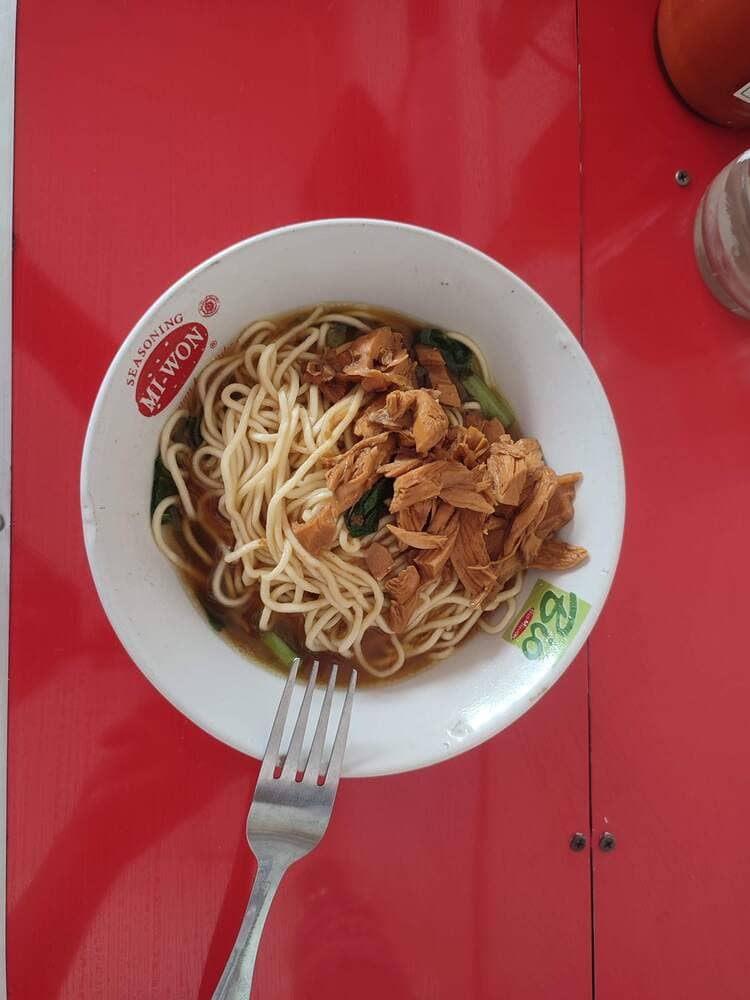
Bargaining
Bargaining is incredibly common in Indonesia. Locals haggle all the time.
You can haggle even if the price is already displayed, but only at smaller markets.
Don’t bargain for street food prices.
In Bali, especially in more touristic areas, expect to pay more than locals no matter what. Knowing that a good rule of thumb is to counter the first offer with 50% of it and then meet the vendor in the middle.
Tipping
Tipping is not customary in Indonesia.
Registered restaurants will add 10% to the bill. Street food vendors will not.
If you think the service was good, your tip will be appreciated, although it may be refused at first.
Frequently Asked Questions
Let’s answer some of the internet’s (and most certainly your) most burning questions about money in Indonesia.
What is the ATM withdrawal limit in Indonesia?
The maximum withdrawal limit on ATMs in Indonesia is 3.000.000 IDR (190$) from the ATMs of Cimb Niaga (charges a fee), Pertama Bank, and HSBC.
BCA, BNI, and Mandiri Bank offer between 1.250.000 IDR and 2.500.000 IDR per single withdrawal.
Since most ATMs in Indonesia do NOT charge access fees, you may withdraw a couple of times without additional charges.
Where to exchange money in Indonesia?
Only exchange money at Authorized Money Changers.
If you want the best rates, avoid the airport or the main backpacker/tourist areas.
Can you use US dollars in Indonesia?
You cannot use US dollars to pay for things in Indonesia. However, the US dollar is easily exchangeable for the local Indonesian Rupiah.
Can you use Revolut in Indonesia?
Yes, Revolut cards work in Indonesia. Both VISA and Mastercard work. Similar fintech apps like Wise, Monese, and Curve also work there.
If you’re traveling to Java and don’t know which places to visit, I’m your guy. Check out my 2-week Java itinerary for an overview of Indonesia’s most populous island.
Or maybe you’re stuck applying for the Indonesian eVOA? These damn glitchy Evisa/Molina websites… Check out the linked step-by-step guide on how to apply and fix common issues.
If you are going to other Southeast Asian countries, you may want to read my money guides for them too:
- Tourist Guide to Money in Timor Leste
- Tourist Guide to Money in the Philippines
- Tourist Guide to Money in Malaysia
- Tourist Guide to Money in Vietnam
- Tourist Guide to Money in Thailand
- Tourist Guide to Money in Cambodia
- Tourist Guide to Money in Laos
- Tourist Guide to Money in Myanmar
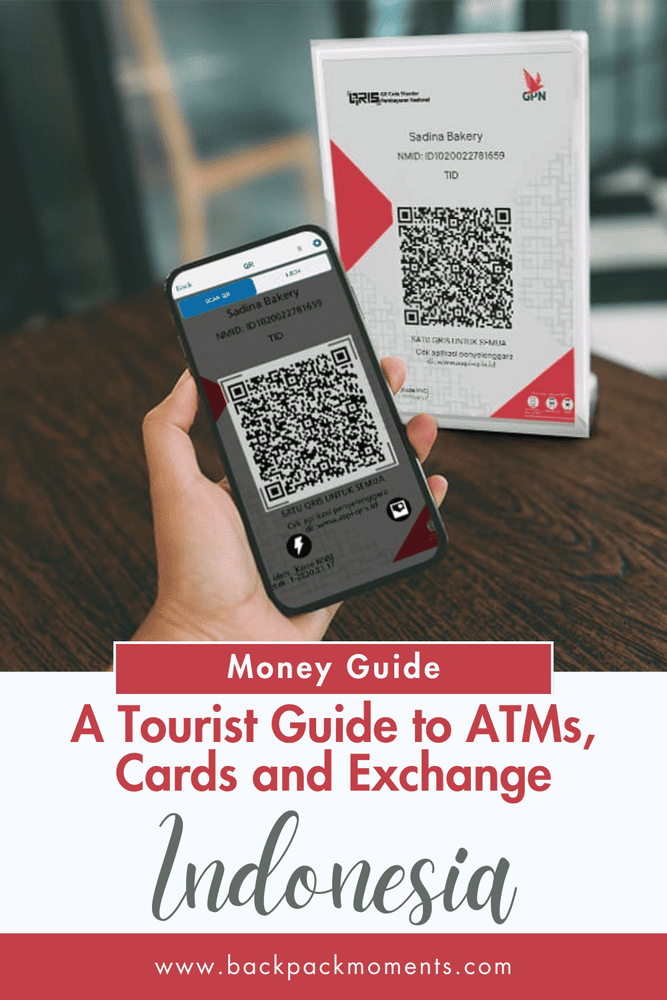
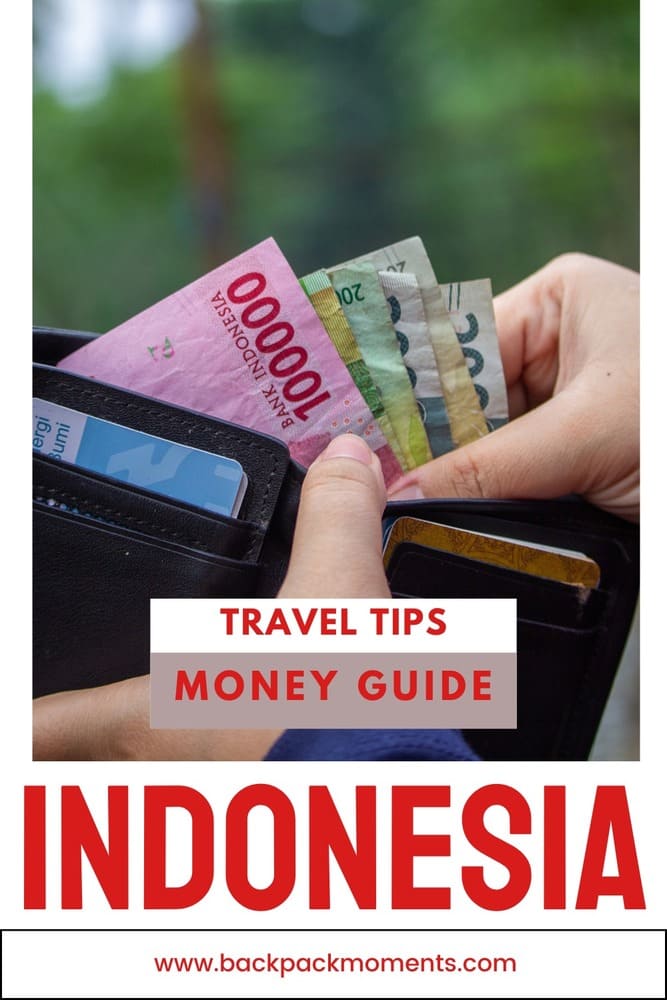

Actually, feel free to delete my last comment. I’ve just realised I was wrong and didnt get charged!
I will leave both as a note to others to check their statements carefully! 😀
P.M.: I’ve never been charged by an ATM in Indonesia, ever. A few ATMs have tried (i.e. informed me they would) so I just cancelled and tried another.
-S.
Every ATM I’ve seen from Bali, Lombok and Jakarta charge a fee. It’s 50,000 IDR per 1,250,000 IDR.
You can exchange money in the banks as well.
Yes, as in pretty much any country. Thanks for the addition!
Some 15 years ago it was impossible (forbidden) to exchange money in the banks in Libya.
There are really strange rules around the world 🙂
Thanks for all this useful information!
CIMB niaga ATM will allow at least 3M IDR withdrawal
Thank you, updated with latest info on the street 🙂